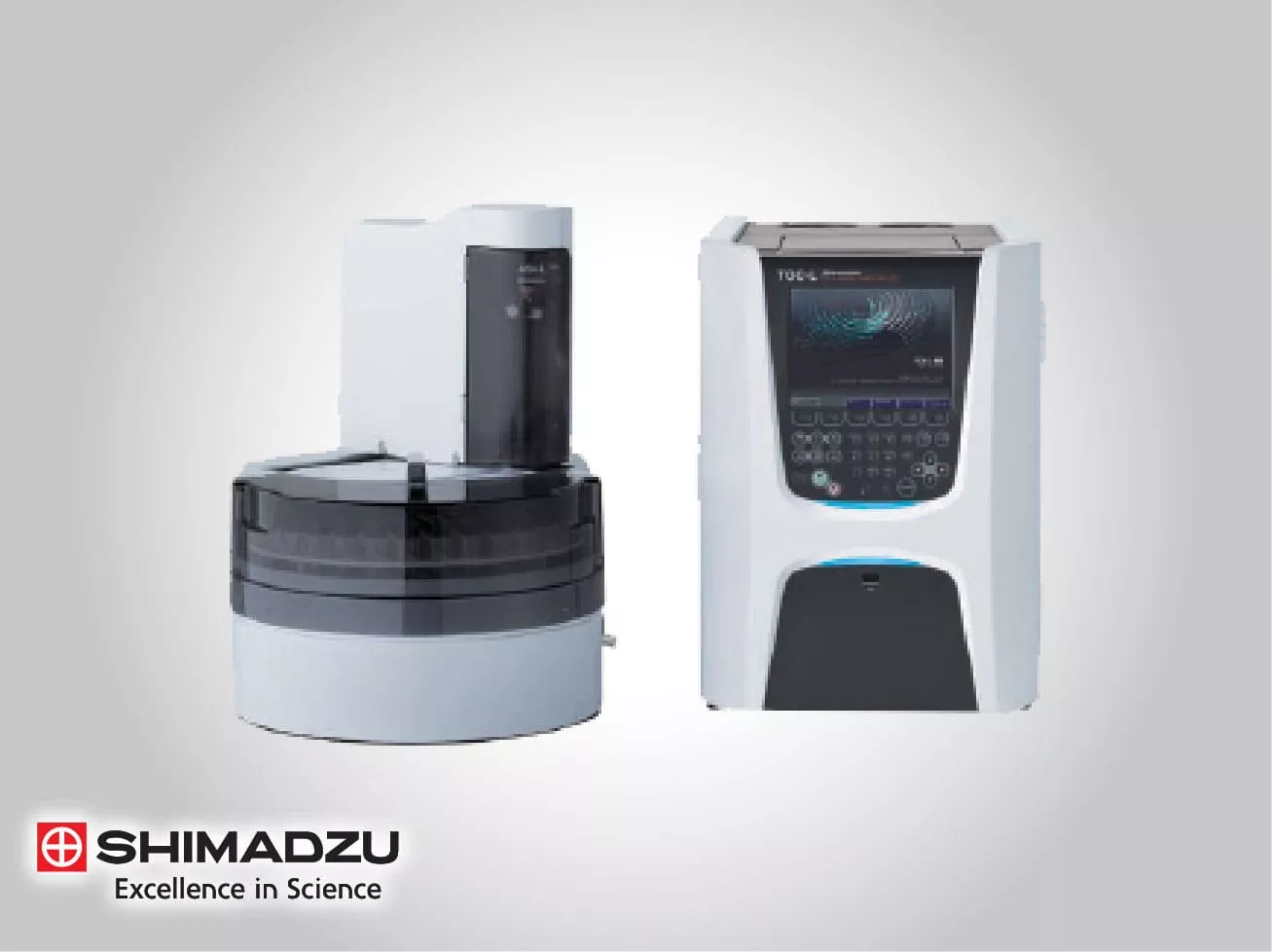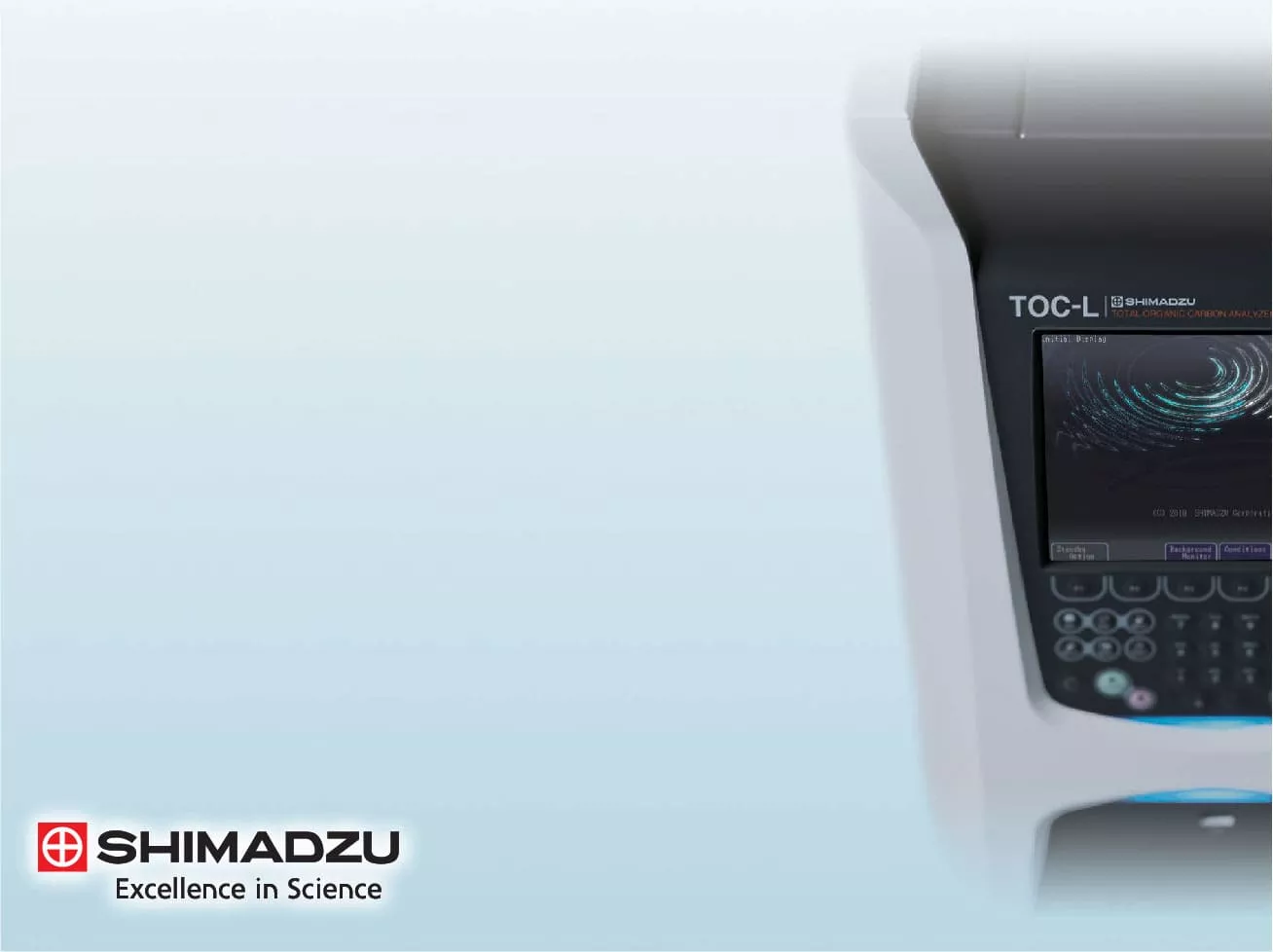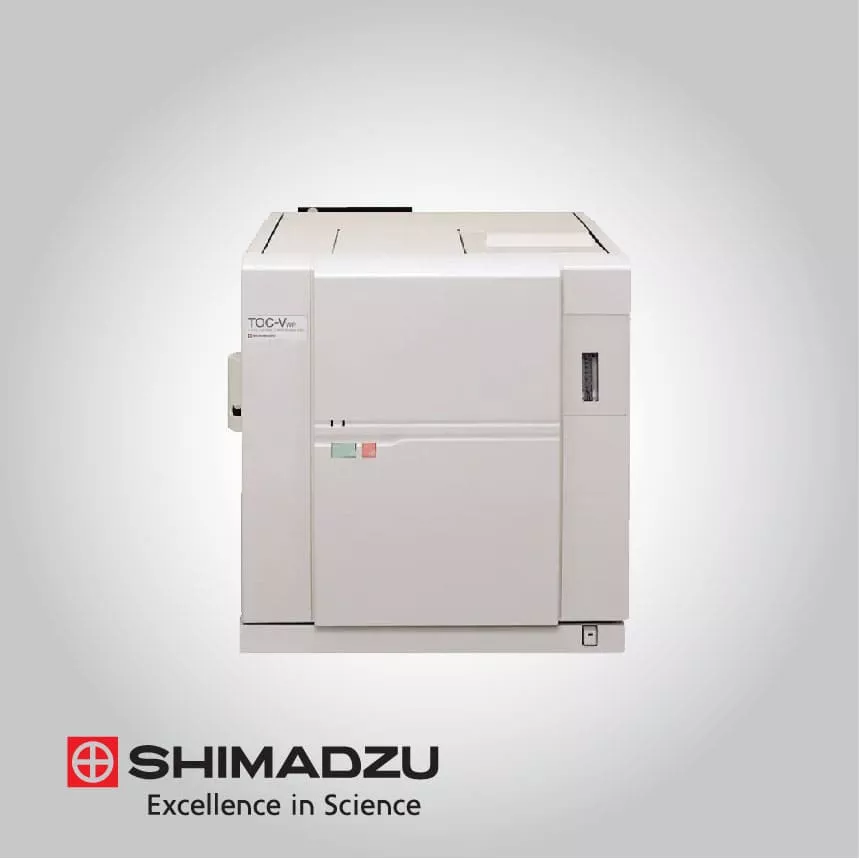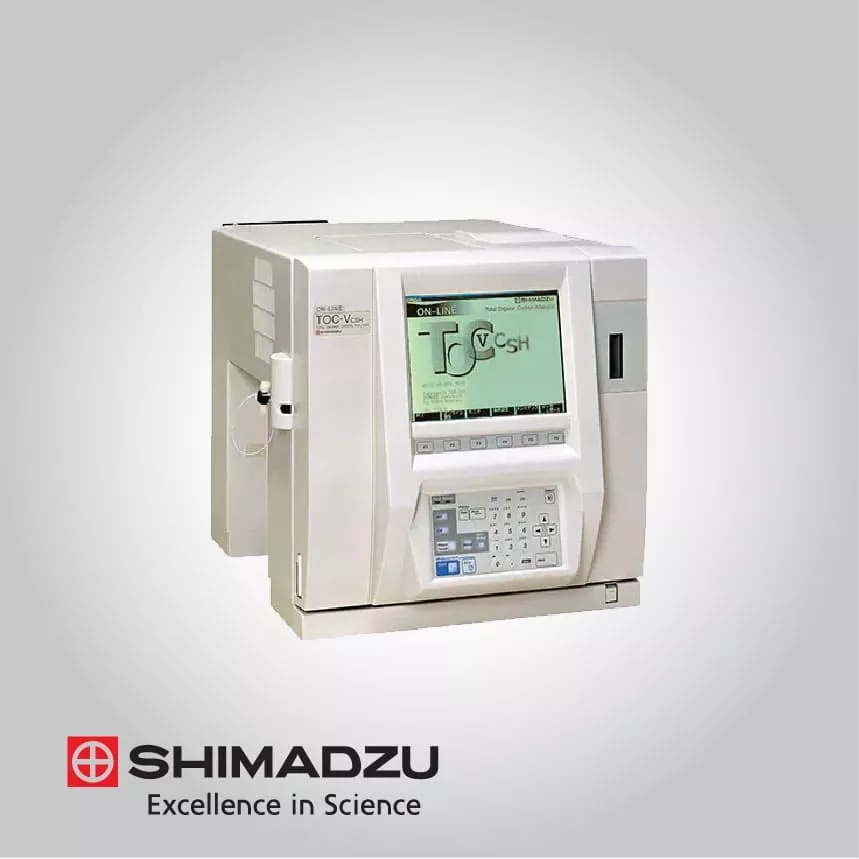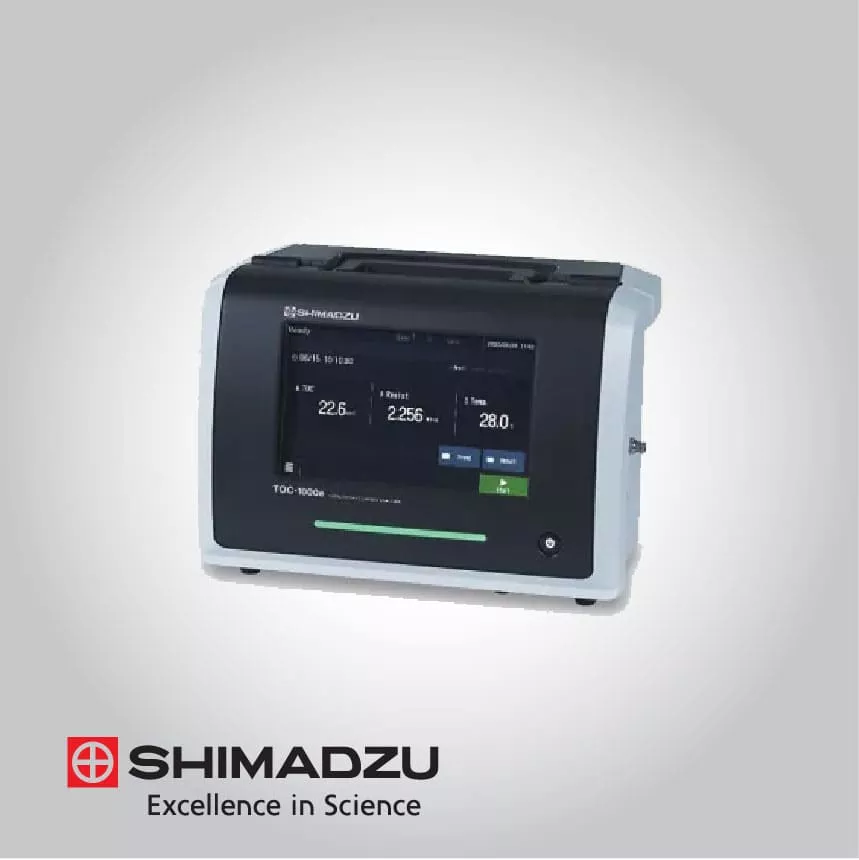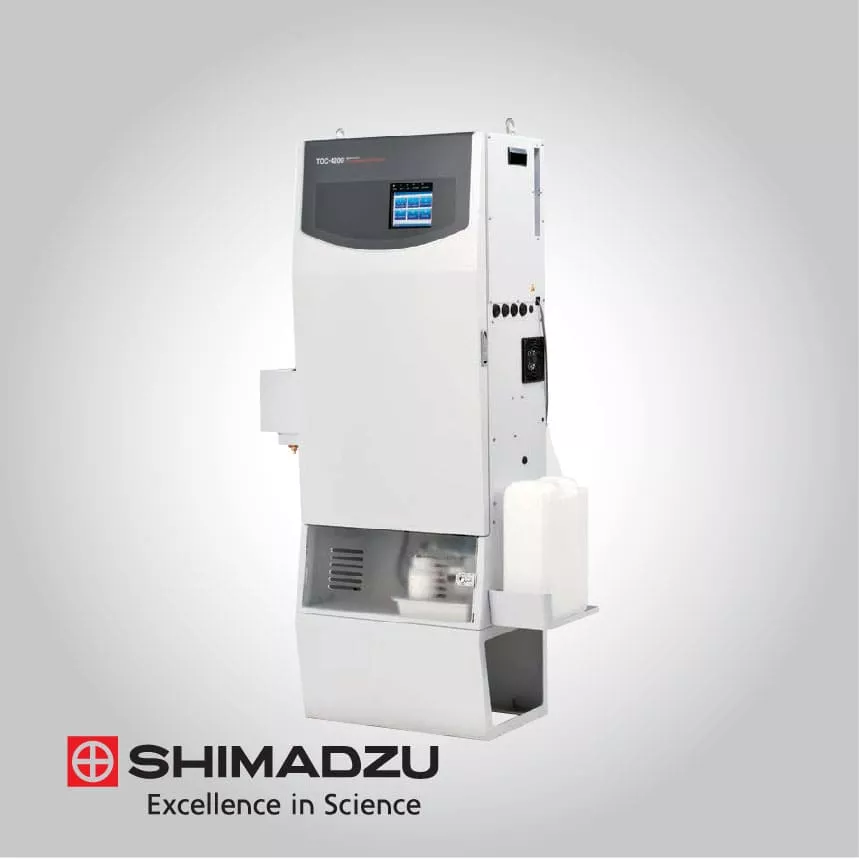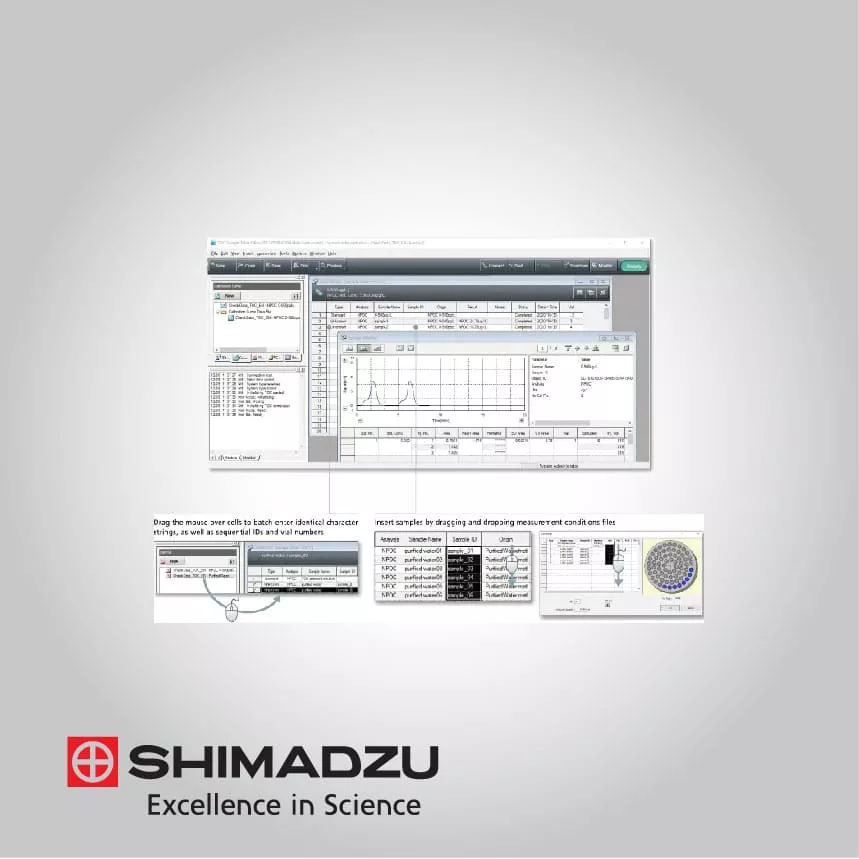
TOC-L Series
With 680°C combustion catalytic oxidation method
Shimdazu TOC-L Series
The TOC-L series of TOC analyzers adopts the 680°C combustion catalytic oxidation method, which was developed by Shimadzu and is now used worldwide. While providing an ultra wide range of 4 μg/L to 30,000 mg/L, these analyzers boast a detection limit of 4 μg/L through coordination with NDIR. This is the highest level of detection sensitivity available with the combustion catalytic oxidation method. In addition, the combustion catalytic oxidation method makes it possible to efficiently oxidize not only easily-decomposed, low-molecular-weight organic compounds, but also hard-to-decompose insoluble and macromolecular organic compounds.
680°C Combustion Catalytic Oxidation Method
Developed by Shimadzu, the 680°C combustion catalytic oxidation method is now used worldwide. One of its most important features is the capacity to efficiently oxidize hard-to-decompose organic compounds, including insoluble and macromolecular organic compounds.
TOC (total organic carbon) Measurement
The 680°C combustion catalytic oxidation method achieves total combustion of samples by heating them to 680°C in an oxygen-rich environment inside TC combustion tubes filled with a platinum catalyst. Since this utilizes the simple principle of oxidation through heating and combustion, pretreatment and post-treatment using oxidizing agents are unnecessary, which enhances operability. The carbon dioxide generated by oxidation is detected using an infrared gas analyzer (NDIR). By adopting a newly-designed, high-sensitivity NDIR, the TOC-L series achieves high detection sensitivity, with a detection limit of 4μg/L, the highest level for the combustion catalytic oxidation method. The figure below is a schematic diagram showing TOC measurement using the 680°C combustion catalytic oxidation method and the NDIR method.
The sample is delivered to the combustion furnace, which is supplied with purified air. There, it undergoes combustion through heating to 680°C with a platinum catalyst. It decomposes and is converted to carbon dioxide. The carbon dioxide generated is cooled and dehumidified, and then detected by the NDIR. The concentration of TC (total carbon) in the sample is obtained through comparison with a calibration curve formula.
NPOC (non-purgeable organic carbon) Measurement
In environmental water and other samples in which the IC component of the TC is extremely large, significant errors may result if the abovementioned method is used for TOC measurement. Accordingly, the organic carbon in the sample is usually measured via an NPOC measurement as shown in the figure below. This method is the same as TOC measurement methods using acidification and sparging (IC removal) as described in official measurement methods (such as JIS and ASTM).
By sparging samples to which a small amount of acid has been added, the IC in the sample is converted to carbon dioxide. This carbon dioxide is removed, and the TOC is obtained by measuring the TC in the treated sample. When the carbon dioxide from the IC is removed, POC (purgeable organic carbon) may also be lost. Accordingly, the TOC obtained with this method may be referred to as NPOC. Shimadzu provides options that measure this POC, which is typically lost, enabling more complete TOC measurement.
Read more about Shimdazu TOC-L Series





